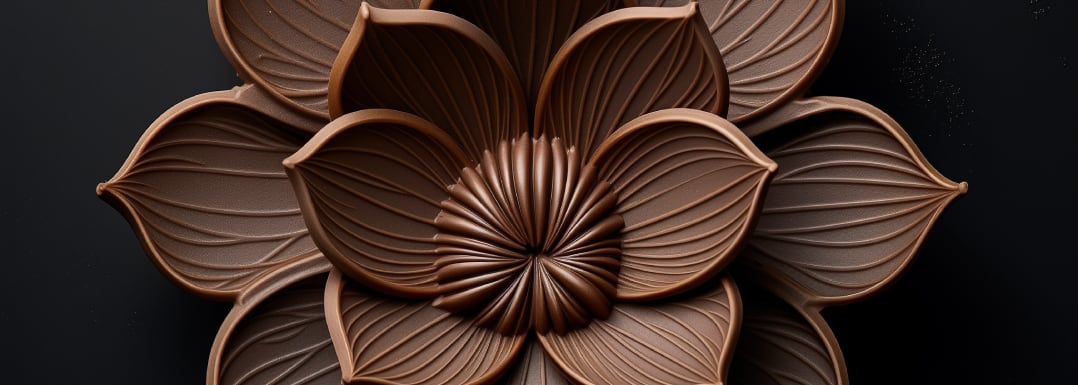Within the last decade, the artisanal chocolate market has gained significant popularity among younger consumers seeking indulgent treats, especially in Asian and Middle Eastern countries.
These chocolates are typically sold in bar format due to their easy-to-handle nature and often include labels such as 'single origin', 'tree-to-bar' and 'bean-to-bar', to convey exclusivity, sustainability, and a reason to believe in the chocolate's premium value.
In Northeast Asia, premium chocolate typically refers to nama-style chocolates, known for their velvety, creamy and rich melt-in-the-mouth texture. Until now, few chocolate makers have produced large batches of these premium soft chocolates due to their short shelf life and higher prices, which means that consumers usually only buy them during festive seasons or for special occasions.
Over the past 10 years, the number of small artisanal chocolate makers in Southeast Asia has grown; these chocolate makers offer fine, crafted, and premium chocolates in specialty shops, providing an in-road for truffle, ganache, and Nama-style chocolates to satisfy consumers' palates. In the retail space, the soft chocolate trend is slow to catch up, with just 19 products launched in the market between 2014 and 2024 as reported in Mintel's Global New Product Database (GNPD).1 Shelf life and costs are likely the biggest barriers to entry.
The market opportunity
The total global chocolate confectionery market is estimated to be worth US $156 billion in 2024 and is expected to reach US $303.9 billion by 2034.2 In comparison, the premium chocolate market is estimated to be worth over US $6 billion in 2024, and is expected to reach over US $12 billion by 2034.3
From these projections, we can estimate that premium chocolate will command about 4% of the market share in 2024 and also by 2034. This exponential growth of the premium chocolate market underscores the increasing consumer demand for indulgent and high-quality chocolate experiences.
For the Asia Pacific market specifically, the entire chocolate confectionery market is expected to climb to US $17.33 billion in 2024 and over US $21 billion by 2028, while the premium chocolate market is on track to reach US $690 million in 2024 and US $847 million in 2028.4 This creates a niche market for artisanal chocolate makers to take advantage of producing premium chocolate, and in particular to explore soft chocolate innovations.
Consumer trends in Asia also lean towards soft chocolates textures and claims. In the past five years, 13.5% of new chocolate confectionery products launched in Asia have 'smooth' (silky, velvety, creamy, and butter) texture claims. 5.1% have 'melt-in the-mouth' claims and 2.9% have 'soft' texture claims.5
Confectionery brands in China are dialing up on indulgence with innovative textures and formats to create exciting ways to satisfy consumers cravings.6 In Japan, premium claims are rising, mirroring confectionery product upgrades that promise indulgence. Mintel also reports that confectionery products in Japan are starting to include flavours that imitate desserts.7
A game-changer for the industry
While traditional chocolate has long been celebrated for its rich flavour and popular textures such as crunchy nuts, crispy wafer layers and chewy caramel, the emergence of soft chocolate presents an opportunity for chocolate manufacturers and artisanal chocolate makers to push the boundaries of creativity.
With Coberine 206 – a patent pending shea-based cocoa butter equivalent (CBE) – Bunge has identified a sweet spot in the premium chocolate market: a harmonious blend of tradition and innovation that empowers artisans to craft soft chocolates with infinite shaping possibilities while addressing critical challenges that often deter industry entry.
Set to debut in Asia and the Middle East, Coberine 206 offers the following benefits:
- Premium soft chocolate taste Chocolate made with Coberine 206 has a solid fat content close to chocolate made with anhydrous milk fat (AMF), giving the resulting chocolate a soft texture and enhancing the chocolate taste. Sensory-wise, it provides fast meltdown, coolness sensation, and flavour release, resulting in an indulgent taste experience with a premium soufflé-like texture that elevates soft chocolate indulgence.
- Extended shelf life Nama chocolate typically has a shelf life of one month with proper storage. Ganache and truffle chocolate lasts from three to six months in ambient conditions. Coberine 206 helps to extend the confectionery products shelf life for up to 12 months with no signs of blooming, ensuring a consistent premium taste over time. Say goodbye to the constraints of short-lived soft chocolate.
- Reduced costs In addition to its taste and longevity, Coberine 206 offers practical advantages for manufacturers and artisans alike. With no refrigeration required, storage and transportation become simpler and more cost-effective, streamlining logistics and enhancing operational efficiency.
With Coberine 206, artisanal chocolate producers can now explore broader market reach and enhance their product offerings while also achieving cost savings. For consumers, they can now enjoy premium soft chocolates all year long.
References
1. Mintel. Global New Product Database (GNPD) 2014 to 2024.
2. Future Market Insights Inc. Chocolate Confectionery Market Forecast, Outlook & Trends 2034.
3. Future Market Insights Inc. Premium Chocolate Market Size, Forecast and Trends to 2034.
4. Euromonitor. Chocolate Confectionery in Asia Pacific Data graphics, October 2023.
5. Mintel Report. A Year Of Innovation In Chocolate Confectionery, 2024.
6. Mintel Insight. Trending in China, Chocolate & Sugar Confectionery, 2023.
7. Mintel Insight. Trending In Japan: Chocolate Confectionery, 2023.




